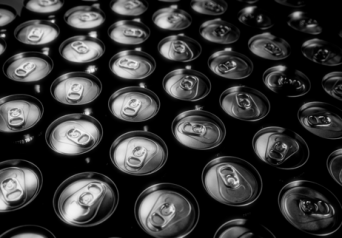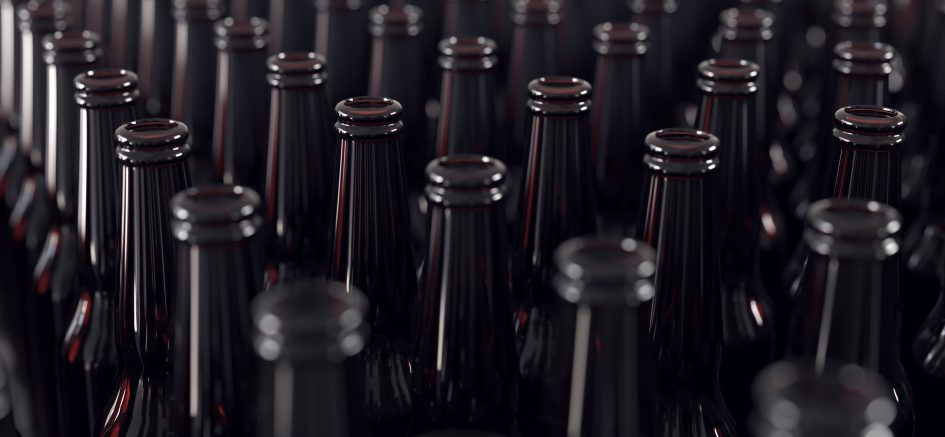This is one of those stories that is part-COVID-19 and part-longer term trend. We have all seen the shift craft breweries in this part of the world have been making to cans. That has been taking place for the past couple years. However, COVID-19 seems to be accelerating that switch in ways I wasn’t expecting.
I was planning on writing about the impending death of the bottle back in March, but then the COVID restrictions began and other stories became more important and I put that idea on the back burner. But I decided to move it to the front burner again when I noticed that the restrictions seemed to be accelerating the trend toward cans.
I did my CBC Radio Active column on the topic last week. You can listen to it here. My primary thesis is that economics and thawing consumer attitudes have opened cans to craft breweries. The scramble to find new ways to get products into consumer’s hands has accelerated this shift.
Let me take a step back. The shift from bottles to cans has been coming for some time – I, myself, have written about it more than once. But the trend has been accelerating. Almost every single brewery that has opened in Alberta and has packaged product (i.e., not keg/taproom only) since 2018 has packaged predominantly in cans. The only exception I can think of is Blind Enthusiasm, who has opted for bottles for obvious reasons.
Then in March, Alley Kat announced it was making the shift as well. This news caused me to stand up and take notice as they were one of the last to be fully in on the industry standard bottle (the tall necked, threaded cap bottle that is distributed as part of a pool to all participants).

In particular the death of the 650-ml size bottle – the “bomber” – has been particularly swift. What used to be a standard package for specialty one-off beer is almost never found on shelves these days (there are exceptions). But six-packs of glass bottles are also disappearing rather quickly. Even those breweries that offer both (e.g., Big Rock, Yukon) are emphasizing cans.
The trend cannot be denied. The question is why. I argue (and for industry folks this will not be earth shattering) two reasons. The first is cold, hard economics. Packaging in cans used to expensive. Canning lines were large and pricey. Breweries had to buy large stocks (and I mean LARGE) of pre-printed cans which sat in their brewery for months. It simply wasn’t feasible for a small craft operation.
But a few years ago smaller-scale, more affordable canning lines hit the market. And labeling technology improved to allow breweries to purchase unprinted cans (“blanks”) and affix labels to them while filling. In the early days these labels look cheap and amateurish but have improved immensely in recent years. So, a brewery with four core beer can purchase one order of cans rather than four orders – one for each beer.
What may be even more important is the advent of mobile canning. Companies have popped up that specialize in bringing the canning line to you. All the necessary equipment (except cans and beer) are loaded on a truck and sent around the province. Breweries book time, the truck pulls up at the back of the brewery, spends a few hours chunking through batches of beer, packs up and heads to the next site. Breweries lose some flexibility as to when they package but they save a lot of money in not having to buy a line for themselves.
(As an aside, this is actually a very efficient use of resources – a sort of for-profit tool co-operative. Fermenters are used (almost) daily but at most craft breweries packaging is an intermittent activity where the line sits idle for days at a time.)
These advances have transformed the packaging calculus. Suddenly cans can be cheaper and more efficient than bottles.
The second reason is shifting consumer attitudes. For most of my craft beer drinking/observing days, cans were a sign of poor quality. A macro lager in a can was fine, but craft beer needed to be in a bottle. Some of this opinion was due to experience – craft beer was usually in bottles while cheap lager was in cans, leading to correlation being confused with causation. And some was due to misperceptions about cans effect on beer. Right or wrong, that was the impression and it was powerful enough for breweries to avoid cans.
I have been surprised just how fast those attitudes have fallen away. I never hear anyone argue bottles are better for quality anymore. Craft beer drinkers are now expressing a preference for cans – usually for their convenience, light weight and unbreakability. Some now argue that cans are BETTER for beer quality, with some validity but mostly it sounds like post-facto justification (in other words, they overstate the advantages).

The combination of economics and shifting consumer preferences has led to a tidal wave of can hitting the market; a tidal wave that has submerged bottles.
And then COVID hit. Pubs closed, people cloistered in their houses and breweries scrambled to figure out how to get their product into people’s hands. Particularly hard hit were taproom/keg only operations, who basically lost their entire retail vehicle. Many have been doing growler fills and the like, but I have also noticed some keg-only breweries suddenly have cans on offer in liquor stores. It is possible these breweries were already working toward packaging before COVID, but I kind of suspect at least some did a quick adjustment to their business plan to cope.
And, lo and behold, you could get product in cans in a matter of days by calling on a mobile canning company (if you had product ready and they had openings in their schedule). That wouldn’t happen if you wanted to bottle. And I suspect now that these breweries have introduced their canned beer to consumers, they won’t go back, at least not entirely. They definitely won’t be purchasing a bottling line anytime soon.
Whether the death of bottles and the rise of cans is a good or bad thing is likely the subject of a future post and definitely depends on your perspective. Cans are clearly more convenient and easier to transport. They protect from light skunking, but the plastic lining should give rise to concerns about long term storage. I, personally, am very uncertain about aging a barley wine or imperial stout packaged in cans. As for the environment, I have discussed elsewhere that each has its problems and it depends on which environmental issue you are most concerned about.
Like it or not, cans are here to stay. We will likely continue to see bottles used for beer designed for long term aging and certain styles, especially Lambics, mixed ferment and the like. Otherwise, get used to crushing a can of your favourite craft lager (by which I mean crushing the can after you have responsibly consumed the beer found within it) rather than popping open a bottle.


May 26, 2020 at 9:18 AM
BPA lining, non counterpressure filled, open pit strip mining with no environmental checks, 5 tons of caustic needing to be denatured per ton of aluminum produced, diminished recycling returns requires more aluminum needed each batch, Equally high energy imputs for making & recycling, non recycleable labelled cans, truckload volumes required per brand of printed SKU… etc.
But hey, we can drink at the beach! :/
May 26, 2020 at 10:51 AM
All true. I also like to point out the average industry standard bottle is re-used up to 20 times. While it is owned and controlled by the corporate brewers, it was a pretty smart solution for reducing and reusing.
May 31, 2020 at 5:40 PM
BPA is becoming less of an issue. Breweries can get BPA non-intent cans now. It’s an option when ordering, so you’ll only see it with breweries who are ordering by the truckload (ie printed cans).
June 1, 2020 at 11:23 AM
thanks for this information, Chase. I had seen that BPA-free options were being developed, but was unsure whether they were widely available at this time to small craft breweries.
May 26, 2020 at 9:56 AM
I am probably one of the few who still wishes for bottles. Perhaps I am just clinging to the past where bottles were the norm in the beginning of the AB craft beer movement.
May 26, 2020 at 10:52 AM
Nothing wrong with that!
I still own a large stash of stubbies – best designed beer bottle you can ever find.
Cheers!
May 26, 2020 at 1:45 PM
Personally, I found the bomber as the perfect size of beer. Especially for unique/experimental offerings. One tall boy seems too little while two is too many.
I wonder if there are any government standards coming into play. I couldn’t help notice that nearly all craft beer at the LCBO is canned.
May 26, 2020 at 3:17 PM
I still think a can with a self-adhesive label stuck on it looks cheap and amateurish, no matter what kind of fancy paper you print it on. :/
May 26, 2020 at 9:01 PM
Fair point. But, as I remember it, the labels these days are WAY better than what I saw a few years ago.
May 26, 2020 at 4:04 PM
I am fine with cans for beer that is destined to be consumed ultra fresh. There are however styles that I will bypass if they are packaged in a can….namely wild ales, saisons, any high gravity or barrel aged product. Although I am seeing more BA stouts in cans all the time. 😬
May 26, 2020 at 9:01 PM
That is my position exactly.
July 2, 2020 at 6:40 PM
I prefer tall boy cans as I am more likely to spend money on one can to try it out then I am to spend two times more or more on a 650ml bottle that I may find I don’t like on the first sip.
Also I agree many labels are looking great now. Still some only ok ones for limited run caned on demand beer but if I am at the location I have probably had the beer already and don’t care what the label looks like.
August 11, 2020 at 9:22 PM
The one issue here is price. If you are paying 4.95 for a can of good beer(496ml) and paying 8.50 for the same beer in a 650ml, you are getting ripped off.